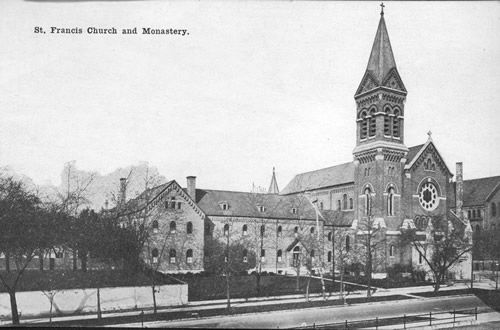In 1869 the Capuchin Fathers built a public chapel and Friary in the block bounded by 4th, and 5th, and Brown streets and Reservoir avenue. St. Francis Parish was organized in 1871 and the present stone buildings where designed by the famous New York architect William Schickel. When construction had been completed, the buildings were dedicated in 1877.
St. Francis Parish was founded by the Capuchin Franciscans friars who first came the United States from Switzerland in 1851. They were invited to Milwaukee by the Milwaukee Bishop John Martin Henni who was concerned about the spiritual welfare of his fellow Germans. At this time, the Germans were on the "low rung" of the immigrants in the Milwaukee area, causing city residents to drive the Germans and the Capuchins to establish their chapel on the north edge of Milwaukee. As numbers grew and Germanic industries [e.g. farming, brewing beer, and making sausage] flourished, Germans were mainstreamed into Milwaukee society. From the start, the Capuchin Franciscans and St. Francis Parish have always devoted themselves to caring for the poor, the needy, and the outcast.
The charism has continued to the present day. In the 1950's, St. Francis Parish developed ministry to African Americans and Puerto Rican Catholics who were settling into the near-north side of Milwaukee. In 1959, even with the Catholic Mass celebrated yet in Latin, a Spanish homily was offered at St. Francis Church after the 11:30 Mass out of sensitivity to the Spanish-speaking Puerto Rican people. The Capuchins were likewise strong advocates of the rights of African Americans in the tumultuous days of the late 1960's and participated in civil demonstrations that promoted justice and equality for people of color. Presently, St Francis Parish sees another minority group emerging in the neighborhood: young adult Catholics who, though comprising the largest population block in the Catholic Church, receive the least service and pastoral care from many Catholic Churches.
St. Francis of Assisi himself would be proud of the life and the history of the Milwaukee church that bears his name in the community's determination to serve the poor in all its many forms and with its many faces.

